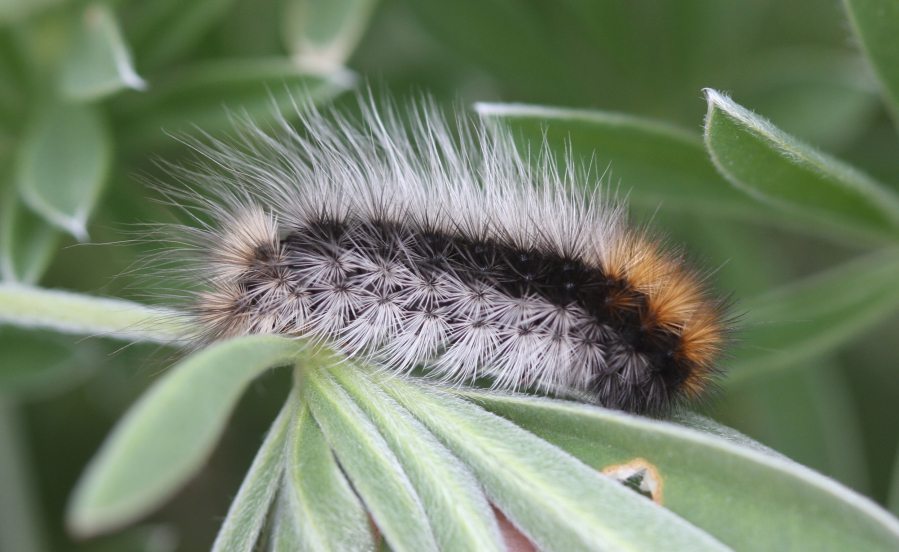Who’s going to win the presidential election? Heck if we know. Try to answer that question without a crystal ball and you’ll run head-on into a dizzying array of national polls and state polls, fundraising tables and delegate counts, endorsements and prediction markets.
So let us point you in the direction of a simpler — and much cuter — source: the woolly bear caterpillar population of Bodega Bay, Calif.
For 30 years, the furry insects have correctly predicted whether a Republican or Democrat is going to win the presidential election. Their pick this year? We’ll get to that, after a brief explanation of these plush political prognosticators’ qualifications.
Their skills were revealed by Eric LoPresti and other graduate students at the University of California Davis who study under woolly bear expert Richard Karban. Since the 1980s, Karban has been conducting an annual census of caterpillars perched on coastal lupine bushes in the bay north of San Francisco.
The population is strikingly and mysteriously erratic: Some years there are lots of woolly bears, and others there are few. According to LoPresti, varying levels of precipitation and predators probably explain some of the cycling, but not all.
LoPresti, a graduate student who studies plant defenses against insects, and his peers saw something political in the varying numbers. When compared to presidential election results since 1984, it became clear that woolly bear populations in March were more abundant in years Democrats won and less prolific in years Republicans did.
The researchers, who wrote about the finding on LoPresti’s blog, Natural Musings, emphasized that the trends should not be interpreted as caterpillar endorsements. “It is tempting to assume that woolly bears are Democrats (and were particularly thrilled by second-term Bill Clinton),” they wrote, “but we cannot exclude the possibility that their abundance is a protest gesture.”
So, back to the crucial question: Who did the March 2016 woolly bears pick? It turns out, LoPresti et al wrote, that even these political animals “seem hesitant” and befuddled by this wacky campaign season. The caterpillars are not terribly abundant this year, which might suggest a Republican victory. But their population is already 36 percent higher than the highest Republican year, yet it is only 36 percent of the lowest Democrat year.
“This result is without presidential precedent in the last 30 years,” the authors wrote. “We suspect that the Republicans have the edge. However, a valid hypothesis would be a third-party winner, such as a right-leaning independent. … Alternately, a contested Republican convention could produce a fractured party and the old Republican woolly bear average would not accurately represent the mean caterpillar abundances seen by this new party.”
In other words: Sorry. No clear answers here.



